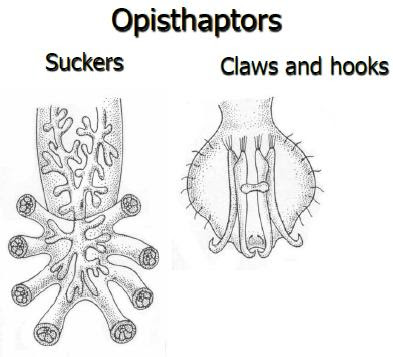 Under flukes, there are 2 different classes of flukes. The first one is known as Class Monogenea.
Under flukes, there are 2 different classes of flukes. The first one is known as Class Monogenea. Monogenetic flukes are tiny ectoparasitic (infect outside host, not internal) flatworms that are mostly found on fishes’ skins and gills. Unlike Turbellarians, flukes generally lack external cilia, therefore all the movement depends on the flukes’ own body wall muscles or body fluids from the hosts. Hence, once flukes are attached to a particular host, it will be sessile and no longer be mobile. Their bodies are also covered by tegument (outer body covering for protection) and acetabulum is absent in the monogenea flukes.Fishes may show symptoms when they are attacked by these parasites. The fish may be flashing (meaning throwing or rubbing itself against something – a sign of irritation) and appear many spots/holes on the body caused by these parasites
Due to the parasitic nature of the monogenea flukes, they need to have a well-developed structure that allows it to successfully attach itself to the fish bodies. So, as shown in the picture, they have an anterior and posterior adhesive organ for attachment functions. The anterior is also known as prohaptor, consisting of adhesive structu res. It also bears suckers or simple adhesive pads that facilitate attachment. The posterior end, known as opisthaptor, is the main organ for attachment consisting of suckers with hooks or claws (as shown on the right).
res. It also bears suckers or simple adhesive pads that facilitate attachment. The posterior end, known as opisthaptor, is the main organ for attachment consisting of suckers with hooks or claws (as shown on the right).
Life Cycle
The life cycle of the monogenetic flukes normally involves only one host, usually fishes. Once the egg has been fertilized and hatched, the larvae, also known as oncomiracidium, will be released and they will float in the water in search of a new host to attach to. They used the fine cilia structures to move in the water. Once they have found a new host, they will use the appendages to attach themselves and the whole life cycle repeats again. Below is the diagram to illustrate the simple life cycle of a monogenetic fluke.
The video link shows an example of a monogenetic fluke called Dactylogyrus rastator attaches itself to the gills of a fish.Parasite on the fish , Parasite on the fish part 2


how monogeneans arrives at his hot
ReplyDelete